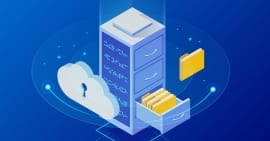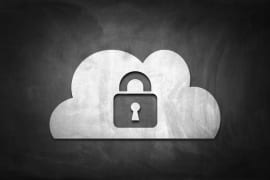4 Things Small Businesses Should Know about Data Backup
Sure, you’ve got data backups in place — but are you confident that your data is completely safe and secure? Without the highest level of security possible, personally identifiable information (PII) is at risk to today’s talented and motivated cyber criminals. Creating a solid data protection and backup policy is crucial, especially for businesses in the health and financial sectors. Here are 4 things that all small businesses should know about backing up your data.
1. Human Errors Happen
Even with the best training and the most proactive staff members, human error is always a possibility. Problems caused by humans can happen in a variety of ways, such as poor password selection, clicking a link that turns out to be malware, or sharing passwords with others. Even the most innocent mistake can cause a catastrophic data loss — an error that can cost thousands of dollars to resolve and can result in reduced client confidence. Leaving a desk unattended or a computer unlocked overnight are two of the key ways that data loss occurs.
2. Protect Your Endpoints
Do you offer WiFi for your staff or clients? Each device that connects to your network is a potential inlet to your sensitive data. With today’s philosophy of remote workers and distance communications, it’s all too easy to allow cyber criminals to infiltrate your protected network. Your cyber security should provide a robust back and recovery solution that allows you easy access to your data in a short period of time. Restoring traditional virtual machines takes a fair bit of time, so you should look for a solution that is robust enough to restore both the data and the virtual machines on which the data is stored. This is especially important in the case of a catastrophic data loss or failure such as a natural disaster as it will help bring your business back online quickly.
3. The Real Cost of Downtime
When your systems are down not only does productivity grind to a halt, but you’re also frustrating customers and vendors by your inability to process orders or payments. Think about it: the data on your computer systems likely runs your entire business. Without access to inventory levels or financial data on your customers, there’s not a lot that your high-paid staff members can do other than manually write change orders. Experts estimate that IT downtime costs small businesses upwards of $1.55 million per year — an astronomical figure for a technology fail that could have been prevented or quickly remediated.
4. Live Monitoring is Important
The cost of downtime should convince you that getting back online quickly after a breach or data loss is crucial to your business success. Quick access to your data requires immediate notification and quick resolution of the problem, something that can be difficult if not impossible if your system is not being monitored in real-time. Even waiting 6-8 hours until an operations team comes in for the day shift can cost you and your business thousands of dollars of profit and an untold number of lost customers. Active monitoring often allows your security partner to pinpoint the problem and stop it before it spreads to disrupt more of your business. Remediation can begin immediately, instead of hours after the problem occurred.
At Coretelligent, our business security professionals are always looking for ways to ensure that your business systems and data stay secure. Our CoreBDR solution is a state-of-the-art data backup and restore process that enables us to restore both your virtual machines and data at the same time — saving you time and money. Learn more about this offering as well as our complementary 360Support offering today by contacting us at 855-841-5888.












